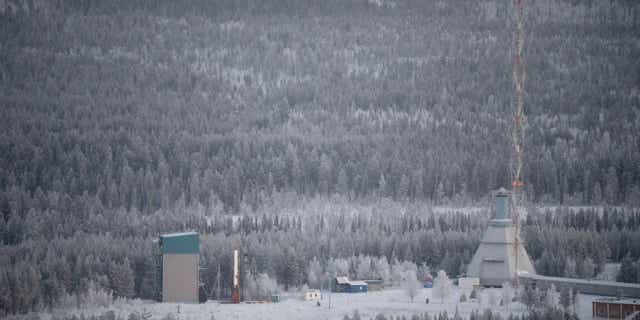The Swedish Space Corp launched a research rocket on Monday, but a malfunction brought the rocket down inside neighboring Norway.
“This is a deviation that we take seriously. We are now investigating the reason why the rocket flew further northwest than nominal,” Marko Kohberg, Head of Sounding rocket and Balloon operations at Esrange Space Center, said in a press release. “It is still too early to speculate about the cause, and we await more information from the current investigation.”
The TEXUS-58 rocket reached an altitude of 250 kilometers (around 155 miles), where it carried out experiments in zero gravity, the SSC said in a press release. The research is part of a European program commissioned by the European Space Agency (ESA).
When it crashed, it had missed its planned landing site at Esrange Space Center by around 25 miles. The agency launched an investigation to try and determine what caused the deviation to occur.
EX-WAGNER GROUP MEMBER SEEKS ASYLUM IN NORWAY AFTER BAR BRAWL ARREST
Picture taken on November 23, 2022 shows the launch of the “SubOrbital Express 3” suborbital rocket from the Esrange Space Center in Jukkasjärvi, northern Sweden. (Marc Preel/AFP via Getty Images)
“It landed in the mountains at 1,000 meters altitude, and 10 kilometers from the closest settlement,” Philip Ohlsson, head of communications at SSC, told Reuters on Tuesday.
RUSSIA DEPLOYS NEW TANK IN UKRAINE THAT UK SAYS COMMANDERS ARE ‘UNLIKELY TO TRUST’ IN BATTLE
Ohlsson assured that the organization informs both governments and “other actors” in the event something goes on, including the Swedish Ministry of Foreign Affairs and Norwegian FOH

Picture taken on November 23, 2022 shows the Esrange Space Center in Jukkasjärvi, northern Sweden, before the launch of the “SubOrbital Express 3” suborbital rocket. (Marc Preel/AFP via Getty Images)
The agency successfully retrieved the rocket by Tuesday, returning the payload to Esrange.
ITALIAN PSYCHIATRIST’S FATAL BEATING BY PATIENT FUELS CALLS FOR MENTAL HEALTH REFORM
The rocket performed three experiments in microgravity, per the SCC: research contributed to “the green transitions,” a possible look at the origins of planets and combustion of iron powder.
The experiments looked at the behavior of different materials in weightless environments, which can, for example, theoretically lead to the production of more efficient solar cells due to greater quality of crystalline materials created in such an environment.
CLICK HERE TO GET THE FOX NEWS APP
The origin of planets experiment looked at how dust and gas might clump together in these kinds of environments, similar to how they may have formed in the early ages of the universe.